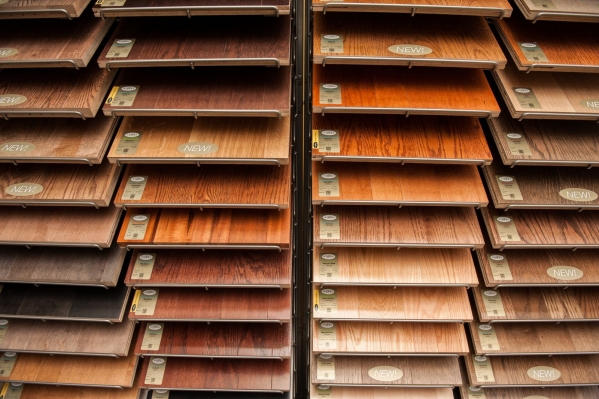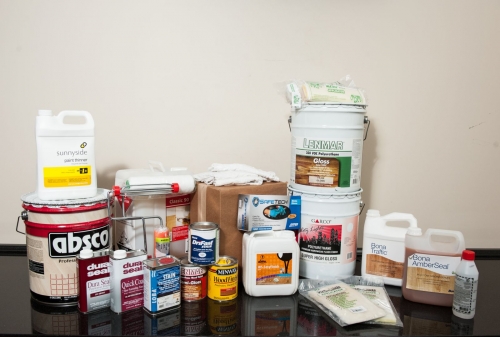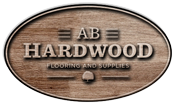What to Look for in Bamboo Flooring
So what qualities should you look for? Most bamboo flooring is made from bamboo pieces glued together in alternating layers and then milled into flooring pieces. Ideally, the bamboo should be at least four to five years of age in maturity so that it achieves a hardness rating of at least 1,400 psi on a Janka scale (harder than most oak flooring); some flooring is being made out of only 2- to 3-year-old bamboo that is not fully mature and much softer on a hardness scale. Some customers have even blogged that they can easily sink their fingernails into the flooring!
The moisture content (MC) should be 8 percent or less and consistent throughout the flooring boards. Consistency and even kiln drying is the key. There should be minimal color variation so that the installers don’t have to worry about drastic color patterning. The glues and finishes should be of high quality, contain at least one layer of a high-quality aluminum oxide for increased scratch resistance and durability, and have low to no VOCs or formaldehyde. Some flooring has only one or two layers of polyurethane, while others have five to six coats. Look for flooring that passes the strict CARB standards that California has set for indoor air quality.

Cleaning your wood floors is easy. Regular maintenance includes sweeping with a soft bristle broom, and vacuuming with the beater bar turned off. You also should clean your floors periodically with a professional wood floor cleaning product.
We carry professional grade cleaning products by Bona & Loba.
Call us (ph.: 773-279-9100) to order yours today.
There are other steps you can take to maintain the beauty of your wood floors.

As I mentioned above, bringing in 30-degree air at 50 percent RH, then warming it to 70 degrees causes its RH to drop to 10 percent. To raise the RH, we need to add moisture. The American Society of Heating, Refrigerating and Air-Conditioning Engineers (ASHRAE) publishes charts showing moisture and air relationships. Using these charts with our example house from above, we need to add about 3.3 pints of water per hour to raise the inside RH to 30 percent. If the ventilation rate is higher, we need to add more water. If it’s colder or warmer outside, the amount of water needed changes. This same house, if located in Duluth, Minn., would need almost 5 pints per hour during common winter conditions. If we want the RH to be even higher, we need to add more moisture. The colder outside air requires more moisture. Higher ventilation rates require more moisture, and higher target indoor RH levels require more moisture. Since the ventilation rate and moisture needed are related, an economical approach is to reduce ventilation rates, then add moisture. Moisture is added to indoor environments from normal household activities and use. When this moisture is not sufficient to meet the needs, a humidifier can be added. A family of four contributes about ¾ pint of moisture per hour. This number is likely smaller than that shown, because people aren’t home all day and don’t clean every day. So I would suggest ignoring household sources when determining moisture needs. Adding moisture then boils down to using humidifiers. Humidifiers can either be stand-alone or attached to a central forced air furnace. Typical residential systems can provide up to about 6 pints per hour. This is an important number: 6 pints per hour, maximum. More than 6 pints per hour are necessary to get to 40 percent RH when it is real cold outside in a relatively tight, 1,800-square-foot house. We can’t even get to 30 percent RH in a somewhat leaky house when it’s moderately cold outside, or in a larger, moderately tight house. (By moderately cold, we mean the kind of weather in South Carolina. By real cold, we mean the type of weather in Minnesota or New Hampshire.) To make matters worse, moisture output from some humidifiers depends on furnace air temperature. According to Aprilaire, a large manufacturer of whole-house humidifiers, their humidifiers produce a maximum of about 3.6 pints per hour when connected to a heat pump. With that number, we can’t even get to 30 percent RH in a moderately tight, moderately sized house in a moderate climate






